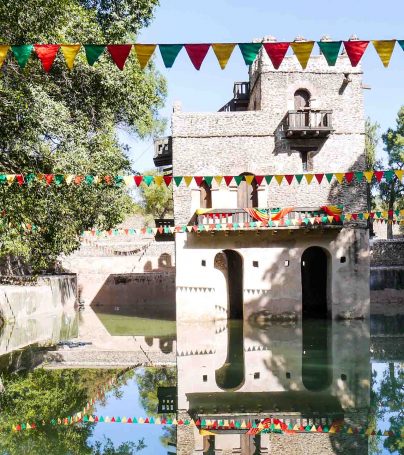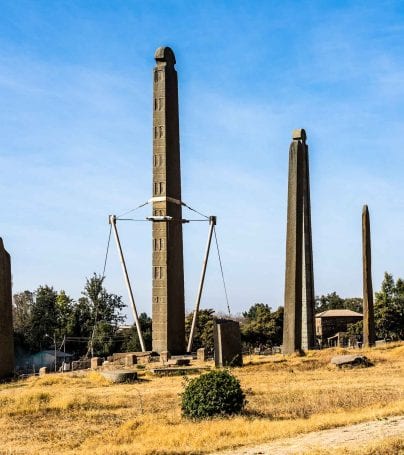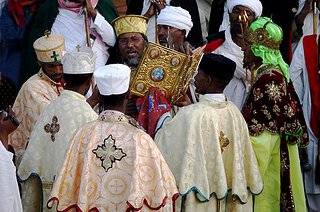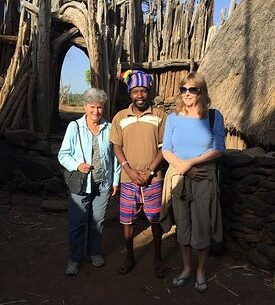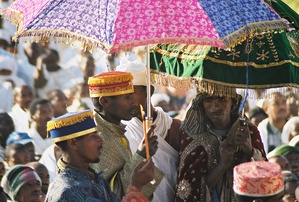Lalibela Adventure Tours
Lalibela is a town in northern Ethiopia. Lalibela is one of Ethiopia’s holiest cities, second only to Aksum, and is a center of pilgrimage for much of the country. Unlike Aksum, the population of Lalibela is very nearly 100% Ethiopian Orthodox Christian. Lalibela was intended to be a New Jerusalem in response to the capture of Jerusalem by Muslims, and many of its historic buildings take their name and layout from buildings in Jerusalem. Located in the Semien Wollo Zone of the Amhara ethnic division, or kilil at 2,500 meters above sea level, Lalibela has a latitude and longitude of . Based on figures from the Central Statistical Agency in 2005, this town has an estimated total population of 14,668, of whom 7,049 were males and 7,619 were females. During the reign of Saint Gebre Mesqel Lalibela (a member of the Zagwe Dynasty, who ruled Ethiopia in the late 12th century and early 13th century) the current town of Lalibela was known as Roha. The saintly king was given this name due to a swarm of bees said to have surrounded him at his birth, which his mother took as a sign of his future reign as Emperor of Ethiopia. The names of several places in the modern town and the general layout of the monolithic churches themselves are said to mimic names and patterns observed by Lalibela during the time he spent in Jerusalem and the Holy Land as a youth.
Lalibela is said to have seen Jerusalem and then attempted to build a new Jerusalem as his capital in response to the capture of old Jerusalem by Muslims in 1187. As such, many features have Biblical names – even the town’s river is known as the River Jordan. It remained the capital of Ethiopia from the late 12th century and into the 13th century.
The first European to see these churches was the Portuguese explorer Pêro da Covilhã (1460 – 1526).
One of the earliest Europeans to see Lalibela was the Portuguese priest Francisco Álvares (1465 – 1540), who accompanied the Portuguese Ambassador on his visit to Lebna Dengel in the 1520s. His description of these structures concludes:
I weary of writing more about these buildings, because it seems to me that I shall not be believed if I write more … I swear by God, in Whose power I am, that all I have written is the truth.[/blockquote ]
Although Ramuso included plans of several of these churches in his 1550 printing of Álvares’ book, it is not known who supplied him the drawings. The next reported European visitor to Lalibela was Miguel de Castanhoso, who served as a soldier under Christovão da Gama and left Ethiopia in 1544. After de Castanhoso, over 300 years passed until the next European, Gerhard Rohlfs, visited Lalibela at some time between 1865 and 1870.
According to the Futuh al-Habasa of Sihab ad-Din Ahmad, Ahmad Gragn burned one of the churches of Lalibela during his invasion of Ethiopia. However, Richard Pankhurst has expressed his skepticism about this event, pointing out that although Sihab ad-Din Ahmad provides a detailed description of a monolithic church (“It was carved out of the mountain. Its pillars were likewise cut from the mountain.”), only one church is mentioned; Pankhurst adds that “what is special about Lalibela (as every tourist knows) is that it is the site of eleven or so rock churches, not just one — and they are all within more or less a stone’s throw of each other!” Pankhurst also notes that the Royal Chronicles, which mention Ahmad Gragn’s laying waste to the district between July and September 1531, are silent about the Imam ravaging the fabled churches of this city. He concludes with stating that if Ahmad Gragn burned a church at Lalibela, it was most likely Bete Medhane Alem; and if the Muslim army was either mistaken or misled by the locals, then the church he set fire to was Gannata Maryam, “10 miles east of Lalibela which likewise has a colonnade of pillars cut from the mountain.”
This rural town is known around the world for its monolithic churches which play an important part in the history of rock-cut architecture. Though the dating of the churches is not well established, most are thought to have been built during the reign of Lalibela, namely during the 12th and 13th centuries. There are 12 churches, assembled in four groups:
The Northern Group: Bete Medhane Alem, home to the Lalibela Cross and believed to be the largest monolithic church in the world, probably a copy of St Mary of Zion in Aksum. It is linked to Bete Maryam (possibly the oldest of the churches), Bete Golgotha (known for its arts and said to contain the tomb of King Lalibela), the Selassie Chapel and the Tomb of Adam.
The Western Group: Bete Giyorgis, said to be the most finely executed and best preserved church.
The Eastern Group: Bete Amanuel (possibly the former royal chapel), Bete Merkorios (which may be a former prison), Bete Abba Libanos and Bete Gabriel-Rufael (possibly a former royal palace), linked to a holy bakery.
Farther afield lie the monastery of Ashetan Maryam and Yimrehane Kristos church (possibly eleventh century, built in the Aksumite fashion but within a cave).
There is some controversy as to when some of the churches were constructed: David Phillipson, professor of African archeology at Cambridge University, has proposed that the churches of Merkorios, Gabriel-Rufael, and Danagel were initially carved out of the rock half a millennium earlier, as fortifications or other palace structures in the waning days of the Axumite Kingdom, and that Lalibela’s name simply came to be associated with them after his death. On the other hand, local historian Getachew Mekonnen credits Masqal Kibra, Lalibela’s queen, with having one of the rock-hewn churches (Abba Libanos) built as a memorial for her husband after his death.
Contrary to theories advocated by writers like Graham Hancock, the great rock-hewn churches of Lalibela were not built with the help of the Knights Templar; abundant evidence exists to show that they were produced solely by medieval Ethiopian civilization.
Customize Your Dream Adventure
We are here to help craft tailor-made adventures for individuals, couples, families, and groups of explorers.


